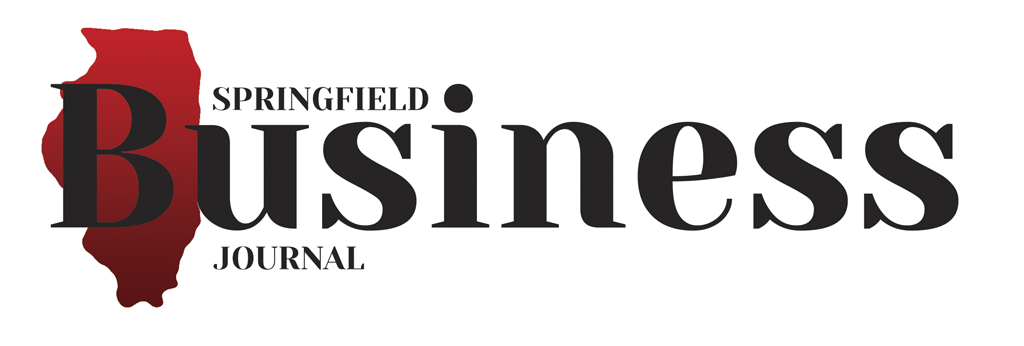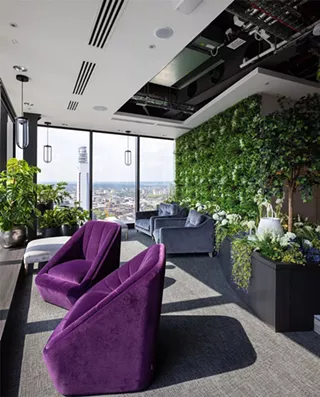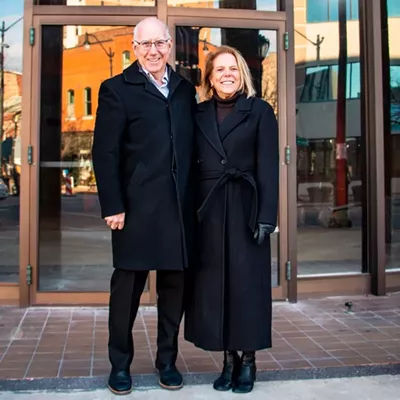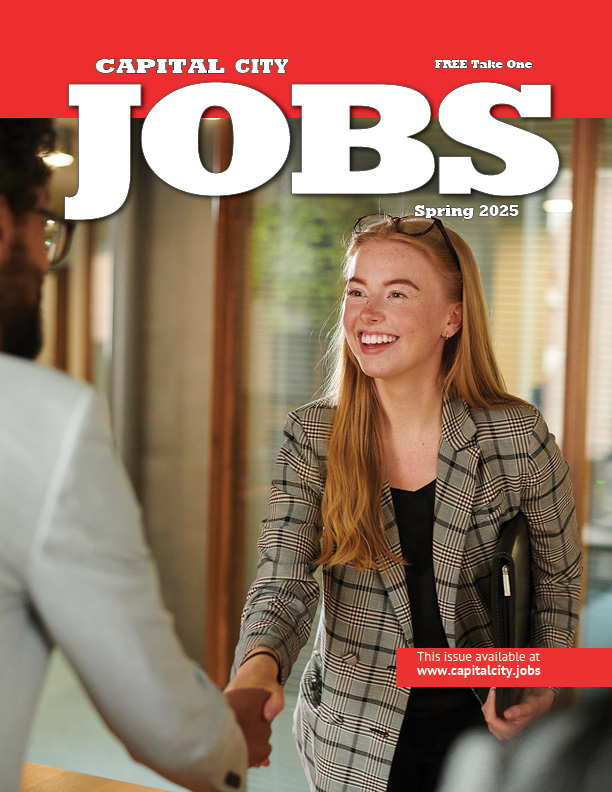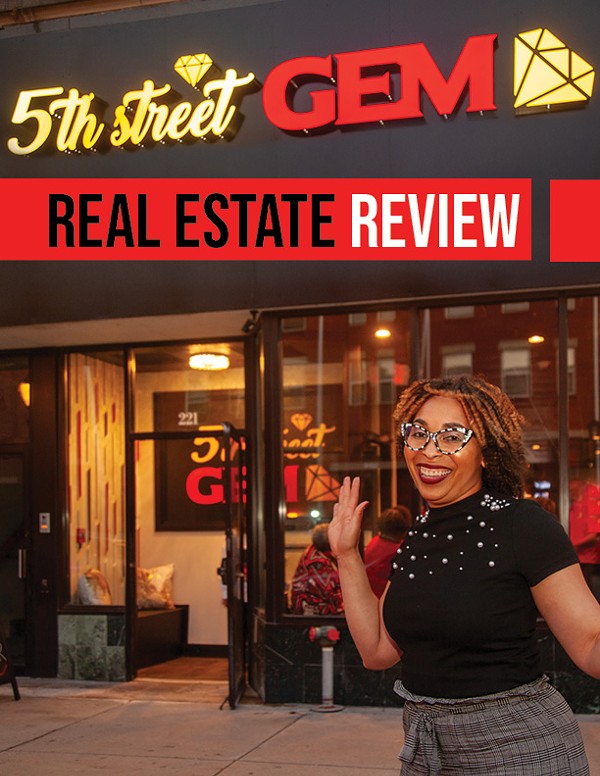The modern workspace is undergoing a significant evolution. Companies are rethinking and reimagining their offices to align with new priorities – from flexibility and collaboration to sustainability and employee wellness.
We will continue to see emerging office design trends as businesses create spaces tailored to their unique needs and company cultures.
If you're looking at an office refurbishment or entire remodel, being aware of the latest office design trends can help you create a workspace that will inspire your team. Read on to find out more about the top 10 commercial office design trends for 2024.
1. Hybrid workspaces
The pandemic forced many companies to embrace remote and hybrid work out of necessity. But even as return-to-office plans progress, a 2023 McKinsey survey found that over 90% of organizations will be combining remote and on-site work.
Office spaces must now strike a balance between supporting collaborative, in-person teamwork and providing amenities for employees who split time between home and the office.
Design elements may include 'Zoom Rooms' for virtual meetings, touchdown spaces for remote workers, hot-desking options and technology that facilitates hybrid collaboration. The office remains a hub for connection, innovation and culture – while also giving teams the flexibility they've come to expect.
2. Biophilic design
Biophilic design brings nature into the built environment – an attractive prospect for employees who spent so much time indoors over the past few years. The office design trend involves maximizing natural light, greenery, organic patterns and natural materials. Living walls, green roofs, courtyards, plants and nature-inspired artwork are just some biophilic elements being incorporated into workspaces.
Research shows biophilic design boosts productivity, creativity, wellbeing and employee satisfaction. It taps into our innate human connection with the natural world. For companies wanting to create a vibrant, inspiring workspace, biophilic design also allows for unique branding and aesthetic.
3. Technology integration
The integration of IoT and connected devices allows businesses to create intelligent, responsive environments. Features may include:
• Occupancy sensors and traffic flow analysis to
inform space planning decisions
• Smart LED lighting and temperature control
systems
• Phone booths, video conferencing systems and interactive screens for seamless collaboration
• Apps for controlling space booking, amenities, AV
equipment
• Voice assistant technologies like Alexa for hands-
free control
• Digital signage and wayfinding solutions
Smart office technology provides data insights while allowing workspaces to respond dynamically to evolving needs. It presents new opportunities to optimize efficiency and create personalized employee experiences.
4. Flexible and modular spaces
Gone are the days of rigid cubicles and assigned desks. Modular furniture systems allow companies to reconfigure layouts and create collaborative zones. Moveable walls, acoustic dividers and multi-use furnishings provide the flexibility to adapt spaces quickly.
Areas can easily be opened up into large communal areas or sectioned off into semi-private nooks. Hot-desking and shared desks also give employees the freedom to choose where they want to work each day. Activity-based working presents diverse settings for different modes – collaboration, focus, learning, socializing or rejuvenating.
This fluid design approach empowers employees and caters to the natural ebb and flow of office-based work. Spaces can be modified to suit changing team dynamics and needs.
5. Sustainability and eco-friendly practices
Sustainability is a key priority for companies aiming to reduce their carbon footprint. Operational energy efficiency, renewable energy solutions and sustainable build materials are some ways workplaces are becoming greener. Additional eco-conscious practices may include:
• Responsible waste disposal and recycling programs
• Low-emission paints, adhesives, furniture and
flooring with non-toxic materials
• Motion-activated lighting to reduce energy waste
• Renewable energy sources like solar panels
• Green roofs or living walls to conserve energy
• Smart water refill stations instead of plastic
bottles
• Bike racks and electric vehicle charging stations
A sustainable office benefits the bottom line through energy savings while demonstrating a commitment to environmental values. In an era of conscious consumerism, an eco-friendly workspace also contributes to positive brand image.
6. Mental health and wellbeing focus
The lines between work and life have become blurred. People are spending more time in the office, and workplace stress has compounded over recent years. Current office design trends promote employee mental health and ensure wellbeing is of paramount importance.
Design considerations include creating private spaces for relaxation or quiet focus, providing access to natural light and greenery, ergonomic furnishings, amenities like gyms or walking trails and policies that encourage work-life balance. Collaborative spaces help build social connections and community.
Workplace culture also plays a major role in nurturing wellbeing. But an intentionally designed, inspiring environment can foster happiness, reduce stress and improve the daily experience for employees.
7. Color psychology and aesthetics
Color palette choices and interior design aesthetics create an ambience that impacts mood and motivation levels. Bright, vibrant tones tend to energize. Warm neutrals promote relaxation and focus. Cool hues like blue or green can have a calming effect.
Using color strategically and playing with different textures, artwork and furnishings can enhance creativity. Bold accent walls or vivid branding elements also allow companies to incorporate brand identity into their office's look and feel.
Thoughtful use of color, lighting and decor creates an inviting, branded environment where people enjoy working and connecting. Psychological balance is key for optimal performance.
8. Multi-functional spaces
Traditionally, the workplace catered mainly to productivity. But work-life balance has become essential. Offices are now integrating amenities that allow for rejuvenation and recreation alongside work.
Gyms, nap pods, massage rooms, games lounges, cafes, outdoor spaces and even "speakeasy" bars or hidden lounges provide employees opportunities for movement, relaxation and fun. Quiet libraries or meditation rooms offer calm reflection.
By blending work, leisure and restoration, the modern office aims to be an all-encompassing environment that sustains innovation and nurtures company culture. Employees can seamlessly transition between collaboration, events or decompression activities.
9. Inclusive design
Diversity, equity and inclusion initiatives have become integrated into business operations. Office design must also cater to a diverse workforce. Strategies include:
• ADA compliance and accessibility for differently-abled employees
• Gender-neutral spaces like bathrooms or lactation rooms
• Prayer rooms, meditation spaces or quiet rooms
• Ergonomic desks and chairs for all body types
• Signage and wayfinding in multiple languages
• Natural light for energy and seasonal affective
disorder
• Providing a variety of work settings
An inclusive office makes all employees feel accepted, valued and able to thrive. It's not only the right thing to do – it's smart business. Diverse companies are more successful at attracting top talent and outperform industry norms.
10. Local culture and brand integration
While drawing inspiration from global office interior design trends, leading companies are integrating local influences into their offices. Celebrating the city or country's heritage and native features fosters community. Some examples:
• Murals or artwork from local artists
• Reclaimed woods or local natural materials
• Architectural details reflecting regional history
• Landscaping with native greenery
• Cafe menus featuring area cuisine
• Collaborations with neighborhood businesses
Similarly, companies aim to have workspace design reflect their values and brand identity. Custom signage, display walls showcasing products or achievements, murals with company slogans and branded color schemes are just some examples.
The modern office seamlessly ties in inspirations from its surroundings and its inner identity. This creates a welcoming, on-brand environment employees can take pride in.
What's next for workspace design?
As work dynamics keep evolving, so will office spaces. But by keeping these 2024 office design trends in mind, companies can craft personalized environments that unlock productivity, creativity and purpose for the new world of work. The office remains an irreplaceable epicenter for community, innovation and culture – and the latest office design trends driving workspace design aim to maximize its positive impact.
Jo Jenkinson is the design director and Nathan Watson is the development director at Office Principles, a commercial workplace design firm. To see examples of past projects and office solutions, visit
